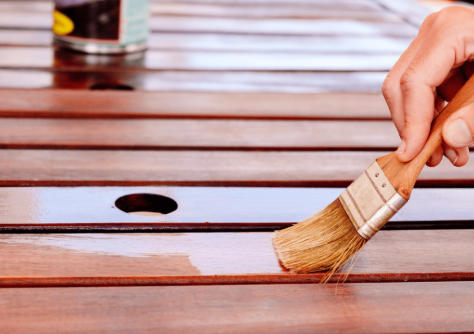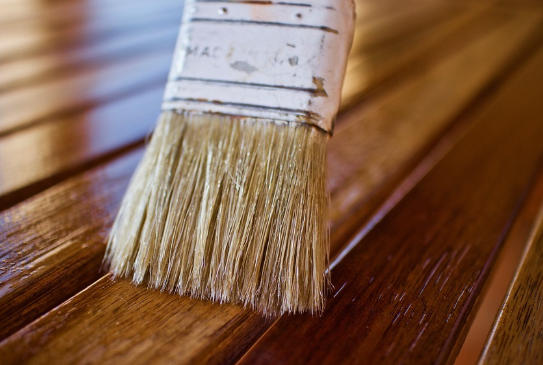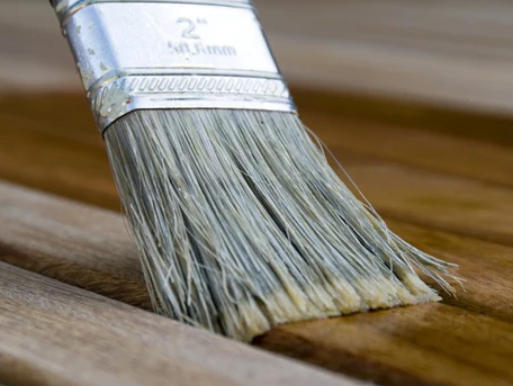










Content Menu
>> 1. Natural Oil and Silica Content
● Why You Should Oil Teak Wood
>> Key Benefits of Oiling Teak
● Step-by-Step Guide: How to Oil Teak Wood
>> Step 4: Second and Optional Third Coat
>> Step 5: Buffing the Surface
● When and How Often to Oil Teak Wood
>> 4. Ignoring Sun and Temperature
● Oil vs. Sealer vs. Varnish: Which Is Right for You?
● Tips for Long-Term Teak Maintenance
● Restoring Weathered or Neglected Teak
● Environmental Considerations
>> 1. How do I know when my teak needs oiling?
>> 2. Can I use any oil for teak?
>> 3. How long should I wait between oil coats?
>> 4. Can I use a sealer and teak oil together?
>> 5. Can old gray teak be restored?
Teak wood is admired worldwide for its superior durability, natural oils, and luxurious honey-gold tone. Its inherent resistance to water, pests, and rot makes it a top choice for outdoor furniture, boat decks, and high-end home décor. Over time, even this robust wood needs periodic treatment to maintain its beauty. That's where oiling teak wood plays a vital role.
While teak is naturally weather-resistant, exposure to sunlight and rain can cause it to fade into a silvery-gray patina. Some homeowners love this natural appearance, but others prefer to preserve teak's warm, golden hue. In this comprehensive guide, you'll learn how to oil teak wood properly, what tools to use, how often to oil it, and the best techniques to ensure long-lasting results.

Teak (Tectona grandis) is a tropical hardwood native to South and Southeast Asia, particularly Myanmar, Thailand, and Indonesia. Its high oil content and dense grain structure distinguish it from most other types of wood.
Unlike softer woods that require frequent sealing, teak contains natural oils and silica that act as self-preservatives. These compounds repel water and prevent fungal decay, making it highly suitable for humid and coastal environments.
Teak's golden color gradually turns gray as it weathers. This gray patina is purely cosmetic and does not affect durability. Oiling teak helps maintain the original rich tone and provides UV protection, slowing down this aging process.
- Indoor Teak: Used in furniture, flooring, or cabinets. It experiences minimal exposure to the elements and requires less maintenance.
- Outdoor Teak: Constant exposure to weather conditions demands more frequent cleaning and oiling to preserve color and finish.
While teak is naturally weatherproof, oiling offers several benefits for both aesthetics and protection.
- Restores lost luster: Revives faded or dull surfaces caused by UV exposure.
- Enhances grain depth: Accentuates the natural beauty and texture of teak wood.
- Reduces drying and cracking: Keeps the wood fibers supple and hydrated.
- Improves surface smoothness: Creates a soft, satin-like finish when buffed.
- Offers moderate UV defense: Slows down the bleaching effects of the sun.
However, excessive oiling can lead to the opposite effect—sticky surfaces, dust attraction, and uneven coloration. Therefore, knowing when and how much to oil is critical.
Gathering the right materials ensures a smooth process and professional results.
- Teak oil (tung-based, linseed-based, or marine-grade)
- Fine-grit sandpaper (180–220)
- Soft, lint-free cloth or sponge brush
- Bucket of mild soap and water
- Clean towels and rags
- Rubber gloves
- Drop cloth or plastic sheet
- Optional: teak cleaner and brightener (for restoration projects)
The choice of oil affects the outcome:
- Pure Tung Oil: Provides a natural, water-resistant finish and deep penetration.
- Linseed Oil Mixtures: Great for indoor furniture, darkens the wood slightly over time.
- Marine Teak Oils: Best for outdoor furniture and boats, offering extra UV and mildew protection.
Avoid products labeled generically as “wood oil,” as they might not be optimized for teak's dense fibers.
Follow these steps carefully to achieve a clean, professional-grade finish that lasts.
Begin by cleaning your teak thoroughly. This ensures the oil penetrates evenly.
1. Mix a mild soap solution with warm water.
2. Use a soft brush or sponge to scrub gently along the grain.
3. Rinse thoroughly and allow the surface to dry completely for 24 hours.
If your teak has gray spots, stains, or mildew, use a teak cleaner followed by a teak brightener before rinsing and drying.
Sanding opens the pores for better oil absorption.
- Use 180–220 grit sandpaper.
- Sand lightly along the grain direction.
- Remove dust with a dry cloth afterward.
Tip: Avoid coarse sandpaper, which can scratch the surface or remove too much natural oil.
1. Shake or stir the teak oil well.
2. Using a brush or cloth, apply a thin, even coat following the wood grain.
3. Let the oil soak for about 15 minutes.
4. Wipe off any excess with a clean cloth to prevent stickiness.
Let the first coat dry overnight before adding another. Typically, two coats are sufficient.
If your wood is older, apply a second—or even third—coat using the same technique. Each layer adds depth and resistance.
Once fully dry, use a soft cloth to buff the surface. This enhances shine and enriches the wood's natural tone.

Maintaining teak depends on exposure and environmental conditions.
- Indoor Furniture: Every 8–12 months is enough.
- Outdoor Furniture: Every 3–6 months or after prolonged weather exposure.
- Boat Decks: Every 2–3 months during active use, especially in marine environments.
If you notice dullness, dryness, or fading, it's likely time to reapply oil.
Tip: If water drops bead up on the surface, the teak still retains enough oil. Once water starts absorbing quickly, oiling becomes necessary.
To maintain quality results, steer clear of these frequent errors.
Too much oil causes stickiness and uneven drying. Always remove excess oil within 15 minutes.
Oil won't penetrate moisture-laden wood properly. Always ensure complete dryness after cleaning.
Regular wood finishes like furniture polish or wax aren't suitable for teak; they clog pores and reduce breathability.
Avoid working under direct sunlight or high humidity, as oil may dry unevenly or trap moisture.
Even after oiling, mild maintenance improves longevity—clean gently, and never leave teak furniture covered in debris or water.
To maintain teak, you can choose from three main treatments depending on your aesthetic and protection priorities.
| Treatment | Advantages | Drawbacks | Ideal Use |
|---|---|---|---|
| Teak Oil | Easy to apply, enhances natural beauty | Requires reapplication | Indoor & outdoor furniture |
| Teak Sealer | Longer-lasting color preservation | Slightly more artificial look | Outdoor furniture exposed to UV |
| Varnish | Maximum shine and durability | Masks natural texture; harder to reapply | Marine applications, luxury finishes |
If you value a soft, organic appearance, teak oil remains the preferred choice. For those wanting less frequent upkeep, sealing offers a pragmatic alternative.
- Clean your teak monthly using mild soap and water.
- Avoid high-pressure washers; they strip off natural oils.
- Keep furniture covered or under shade when not in use.
- If stains appear, use a teak-specific stain remover instead of household bleach.
- Rotate furniture pieces outdoors to even out sun exposure.
Regular light care extends the life of your furniture and delays expensive refinishing work.
Even if your teak furniture looks gray or lifeless, full restoration is possible.
Use a teak cleaner to strip accumulated dirt and oxidized silver layers.
Apply a teak brightener to restore natural color contrast and remove residue from the cleaner.
Lightly sand using 220-grit paper for uniform texture.
Apply two coats of teak oil as detailed earlier. Once it dries, buff gently for a refined sheen.
This process revives neglected or old teak furniture to a freshly polished appearance.
When oiling teak, it's important to use eco-friendly products and dispose of materials responsibly.
- Opt for low-VOC teak oils to minimize air pollution.
- Avoid dumping leftover oils down drains; dispose of them following local hazardous waste guidelines.
- Lay used oily rags flat to dry before discarding to prevent spontaneous combustion.
Such measures ensure both beautiful results and environmentally conscious practices.
Oiling teak wood is an art that combines technique, timing, and patience. Through careful cleaning, sanding, and thoughtful application of quality oil, you can preserve teak's luxurious warmth while protecting it from harsh environmental damage. Whether your teak furniture sits in a cozy living room or adorns your patio, proper oiling ensures it remains timeless, resilient, and stunning.
Consistency is the secret. By integrating regular maintenance into your routine and avoiding common mistakes, your teak wood can retain its elegance and longevity for decades.

When teak wood begins to appear chalky, dry, or pale gray, it's time for oiling. Sprinkle a few drops of water on the surface—if it absorbs quickly, the teak requires reconditioning.
No. Only use teak-specific or marine-grade oils such as tung oil blends. Other wood oils might not penetrate dense teak fibers or may cause sticky buildup.
Usually, you should wait 8–12 hours between coats. Each layer must be fully absorbed before the next application to prevent blotches.
Do not mix or layer them. Oiling first and then applying a sealer can cause uneven absorption or trapped moisture. Choose one depending on your desired look.
Absolutely. Use a teak cleaner and brightener combo, followed by sanding and oiling, to bring back the original golden-brown finish.